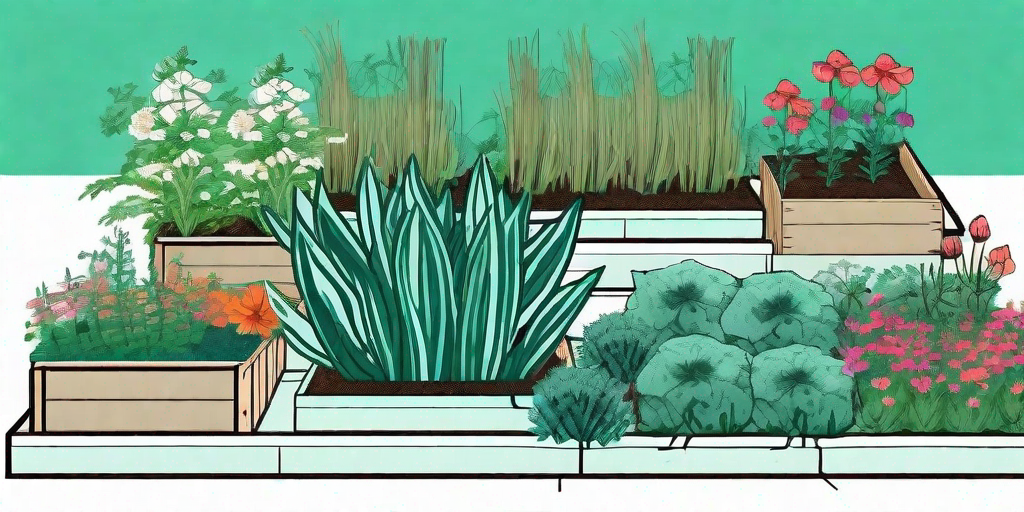
Straw, the unsung hero of the gardening world, can be your secret weapon to a lush, thriving garden. Often overlooked, this humble material is packed with benefits that can supercharge your greenery game. So, let's dive into the straw-mazing world of gardening with straw.
The Straw-nomical Benefits of Using Straw in Your Garden
Soil Erosion Prevention
Straw is a natural and effective way to prevent soil erosion. It acts as a protective layer, shielding your precious soil from the harsh elements. Whether it's a torrential downpour or a scorching heatwave, straw has got your soil covered—literally.
By reducing runoff, straw also helps to retain moisture in the soil. This means less watering for you and more hydration for your plants. It's a win-win situation!
Suppressing Weeds
Straw is a natural weed suppressant. When applied as a mulch, it can prevent those pesky weeds from sprouting and taking over your garden. No more back-breaking weeding sessions, just more time to enjoy your beautiful, weed-free garden.
Plus, straw decomposes slowly, providing long-term weed control. It's the gift that keeps on giving!
Enriching Soil
As straw decomposes, it enriches the soil with organic matter and nutrients. This not only improves soil structure but also promotes healthy plant growth. Your plants will be thanking you with their lush, vibrant foliage.
And the best part? Straw is a sustainable and eco-friendly choice. You'll be doing your part for Mother Earth while reaping the benefits in your garden.
How to Use Straw in Your Garden
As Mulch
Using straw as mulch is as easy as pie. Simply spread a layer of straw around your plants, making sure to leave a gap around the base to prevent rot. A layer about 2-3 inches thick should do the trick.
Remember, the goal is to cover the soil, not smother your plants. So, go easy on the straw. Your plants need room to breathe too!
As a Compost Ingredient
Straw can be a great addition to your compost pile. It's a source of carbon, which helps to balance the nitrogen-rich green materials like fruit and vegetable scraps.
Just make sure to mix it well with the other compost ingredients. A well-mixed compost pile decomposes faster and more evenly.
As a Plant Protector
Straw can be used to protect your plants from cold weather. By piling straw around your plants, you can create a cozy insulation layer that keeps them warm during the winter months.
Just remember to remove the straw when the weather warms up. Your plants will need all the sunlight they can get to grow and thrive.
FAQs About Using Straw in Your Garden
Can I use any type of straw?
Not all straws are created equal. For gardening purposes, it's best to use wheat, oat, or barley straw. These types of straw are less likely to contain weed seeds that can sprout in your garden.
Avoid using hay, as it often contains a lot of weed seeds. The last thing you want is to introduce more weeds into your garden!
Where can I buy straw?
Straw can be purchased from garden centers, farm supply stores, or online. You can also check with local farmers. They often have straw bales available, especially after the harvest season.
Just make sure to buy straw that's clean and free from mold or pests. Your garden deserves only the best!
Can straw attract pests?
While it's true that straw can provide a cozy home for pests, this is usually not a problem if you use it correctly. Avoid piling straw too close to your plants, as this can create a bridge for pests to reach them.
Also, remember to replace the straw regularly. Fresh straw is less likely to harbor pests.
Straw-mendous Tips for Using Straw in Your Garden
- Use straw as a mulch to suppress weeds and retain soil moisture.
- Add straw to your compost pile to balance the carbon-nitrogen ratio.
- Protect your plants from cold weather by piling straw around them.
- Choose wheat, oat, or barley straw for the best results.
- Buy clean, pest-free straw from reputable sources.
So there you have it, folks! With these straw-mendous tips, you're well on your way to a lush, thriving garden. So why not give straw a try? Your garden will thank you for it!











